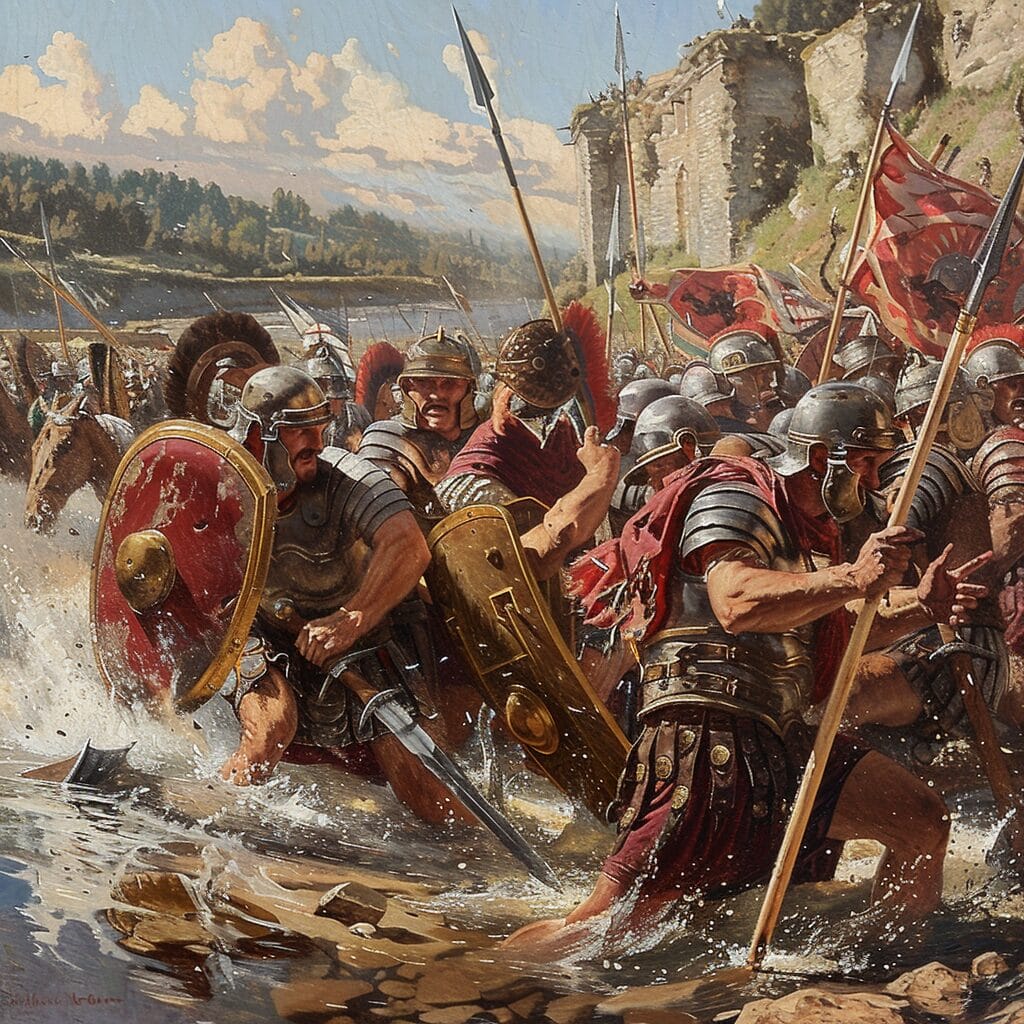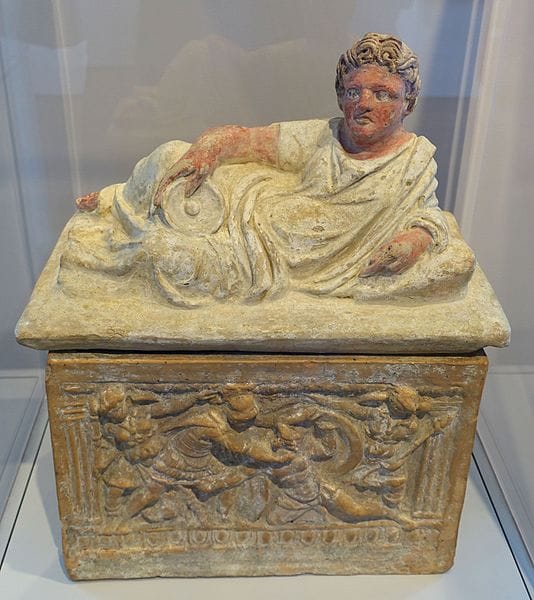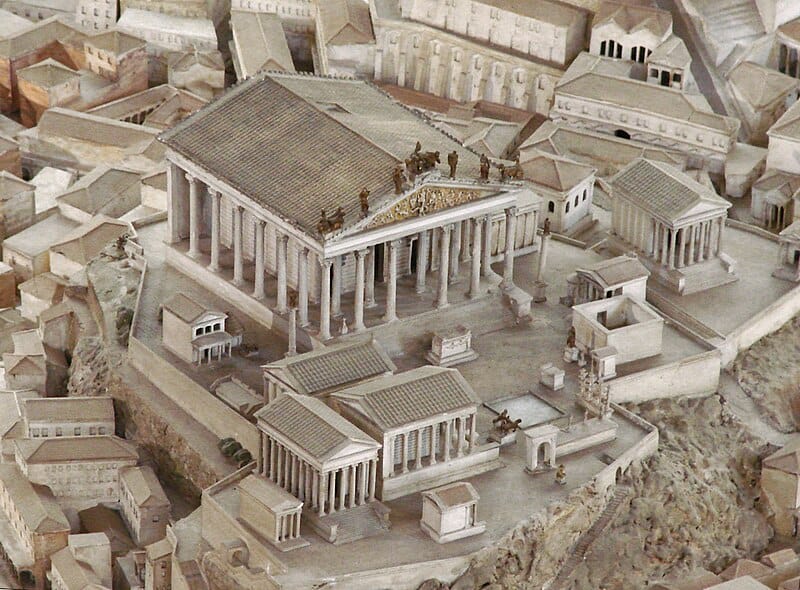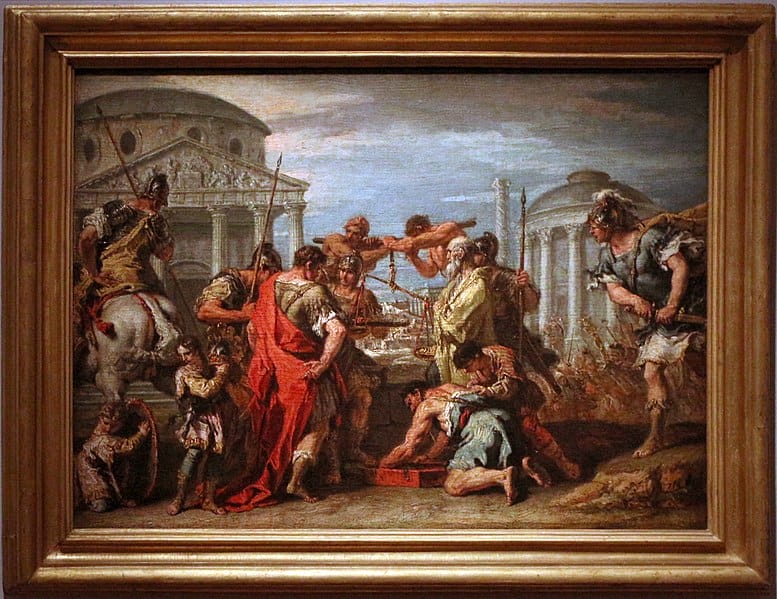The Battle of Allia, one of the most important conflicts in Roman history, occurred on the banks of the Allia River, just north of Rome. Occurring in 390 or 387 BCE, this clash pitted the Roman army against the Senones, a Gallic tribe led by Brennus. The encounter ended in a devastating defeat for the Romans, marking a significant moment in their military history. Esteemed for the severe impact it had on Rome, the battle highlighted the vulnerabilities within the Roman military system at the time.

Despite Rome’s eventual resilience and expansion, the defeat at Allia sent a strong message to the Republic. It led to the infamous Sack of Rome by the Senones, an event that deeply scarred the collective Roman psyche and prompted subsequent reforms in military tactics and strategy. The Battle of Allia not only carried immediate military implications but also influenced Rome’s approach to warfare and defense, setting the stage for its transformation into a venerable military power. The historical narratives and recounting of the event by ancient authors contribute to our understanding of the battle’s significance and the Roman Republic’s response to one of its earliest existential threats.
Key Takeaways
- The Battle of Allia was a disastrous defeat for Rome with lasting historical significance.
- The battle demonstrated the need for military reforms and influenced Rome’s future warfare strategies.
- The cultural memory of the Allia defeat played a role in shaping the Roman historical narrative.
Historical Background
The confrontation at the Battle of Allia was not an isolated incident but the culmination of escalating tensions between rapidly expanding Rome and the diverse Gallic tribes of Northern Italy. Politics, territorial disputes, and cultural clashes laid the groundwork for this significant conflict.
Rome and the Gauls
Rome’s rise as a regional power inevitably led to increased interaction with the various Gallic tribes, each with their complex societal structures. The Senones, one particular tribe of the Gauls, are of special interest due to their direct involvement in the Battle of Allia. Their expansion towards the south put them in direct contact and conflict with Roman territories.
Gallic Tribes in Northern Italy
Northern Italy, also known by Romans as “Gallia Cisalpina,” was home to several Gallic tribes. The region’s rich resources and strategic importance attracted the attention of several expanding entities, including Rome. The Gauls, renowned for their fierce warriors and distinct culture, exerted substantial influence over the area.
Tensions with Etruscans
Prior to the Battle of Allia, Rome had engaged in numerous conflicts with neighboring Etruscan city-states, notably the powerful Etruscan City of Clusium. The expansionist policies of Rome eventually led to their paths crossing with the Gauls, who also had interactions with the Etruscans, both friendly and hostile.

Roman-Senone Relations
The Roman Senate had to navigate a complex web of diplomatic relations with the Senones, a Gallic tribe that had settled in the region of Italy. Known for their military might, the Senones frequently interacted with Roman and Etruscan cities, leading to a series of events that exacerbated the friction between Rome and the Gauls, setting the stage for the Battle of Allia.
Lead-up to the Conflict
The initial sparks of the Battle of Allia can be traced back to the Siege of Clusium, where Roman diplomatic efforts were met with Etruscan aggression, ultimately leading both forces to the banks of the Allia River.
Siege of Clusium
The Siege of Clusium played an important role in escalating hostilities. The city of Clusium, under threat by the Etruscan forces, sought aid from Rome. The Senate deliberated on the request, recognizing the strategic importance of Clusium in maintaining the balance of power in the region.
Roman Diplomatic Measures
Rome responded diplomatically by sending ambassadors to negotiate. However, the negotiations failed to de-escalate the situation. The Etruscan contempt for Roman diplomatic protocols exacerbated tensions, as Roman envoys were seen as taking direct action in the siege.
The March to the Allia
With no resolution from diplomatic channels, the Roman Army mobilized towards the conflict. They advanced to the Allia River, strategically significant as a natural defensive barrier. There, the Roman forces prepared to confront the Etruscan army, setting the stage for the ensuing battle.
The Battle of Allia
Military Tactics and Formation
The military tactics employed by the Romans during the Battle of Allia were traditional legion formations, which typically emphasized flexibility and the ability to respond to various battlefield situations. However, on this occasion, these tactics proved insufficient against the innovative strategies of their adversaries. The Roman military, reputed for its disciplined fighting units, encountered a force that challenged their conventional approach to warfare.
The Role of the Tiber River
The Tiber River’s proximity to the battlefield was a strategic factor in the battle’s outcome. At the confluence of the Allia and Tiber Rivers, the Romans found themselves in a precarious position, with their maneuverability limited by the nearby waterways. This locale inhibited the Roman army’s ability to reposition and contributed to its eventual disarray and defeat.
The Battle
The Gauls were led by Brennus. The Romans, expecting a more traditional engagement, were taken by surprise when the Gauls launched a sudden and ferocious attack. Positioned with their flanks exposed near the Allia River, approximately 11 miles north of Rome, the Roman forces were quickly overwhelmed by the more aggressive and mobile Gallic warriors. Panic spread through the Roman ranks, causing a disorganized and chaotic retreat. Some soldiers fled to the nearby city of Veii, while others made their way back to Rome. The disarray and lack of a coherent defense strategy left the Roman army unable to regroup or counterattack, resulting in a decisive and devastating defeat.
Roman Defeat and Casualties
The defeat at Allia was one of the most disastrous for the Roman Republic. Not only were the military tactics bested, but also the Roman legions suffered substantial casualties. The battle’s result sent shockwaves through Rome, as the defeat laid bare the vulnerability of a Republic often perceived as militarily invincible. The loss at the Allia River, along with the number of fatalities and captives taken, marked a dark day in Roman history, underscoring the devastating potential of underestimating one’s adversary.
Aftermath and Repercussions
The Sack of Rome
After the defeat at the Battle of Allia, the Gallic tribe breached Rome’s defenses and proceeded to sack the city. Rome faced a dire emergency, with most of its quarters plundered and burnt, except for the Capitoline Hill, which held out under siege. According to historical accounts, the Romans were forced to pay a large ransom of gold to convince the Gauls to leave, symbolizing a humiliating capitulation.

Source: Jean-Pierre Dalbéra from Paris, France, CC BY 2.0 https://creativecommons.org/licenses/by/2.0, via Wikimedia Commons
Roman Military Reforms
The shocking defeat brought to light the inadequacies of Rome’s military tactics and organization. In response, significant military reforms were instituted, which historians consider a turning point in Roman History. Notably, Marcus Furius Camillus, appointed dictator following the disaster, played a central role in these reforms, which included the restructuring of the army and the adoption of more flexible tactics to replace the rigid phalanx formation previously used.
Cultural and Political Impact
The cultural impact of this defeat was lasting. The memory of the sack resonated in Roman collective memory, shaping narratives of resilience and recovery. Politically, the event spurred the Senate to reevaluate Rome’s defensive strategies and political alliances to prevent future calamities. The sack also influenced Rome’s pantheon of heroes, with Marcus Furius Camillus often celebrated as the savior of the city for his role in its recovery.
Historiography and Cultural Legacy
Accounts by Ancient Historians
Ancient historical accounts of the Battle of Allia, notably by Livy and Plutarch, provide valuable perspectives on the conflict and its aftermath. They recounted the events leading to the battle, the encounter itself, and the consequences for Rome, highlighting the catastrophic defeat suffered by the Roman Legion at the hands of the Gauls. Livy, known for his work Ab Urbe Condita, gives a meticulous record that remains a cornerstone for understanding Rome’s early history. In contrast, Plutarch‘s biographical approach offers insight into the individuals involved, providing a more humanized version of events.
Modern Interpretations
Modern historians rely on the works of Ancient Historians to form scholarly interpretations that critically analyze the battle’s strategic failures and its impact on Roman military reforms. Utilizing Polybius as a source alongside Livy and Plutarch, they study the evolution of Roman military tactics in response to the defeat. These interpretations shape current academic discourse, portraying the battle as a pivotal moment that spurred the transformation of Rome’s military and civic infrastructure.
The Battle in Roman Collective Memory
The Cultural Legacy of the Battle of Allia holds significant weight in Roman history. It’s marked as a day of infamy, remembered annually as a time of collective mourning and reflection. The battle’s remembrance in Roman collective memory acts as a cautionary tale against complacency, echoing through the Republic and Empire as Rome encountered new challenges. It serves as a narrative of redemption and galvanization for the Roman Legion, embodying the resilience inherent in Roman identity.

Source: Sailko, CC BY 3.0 https://creativecommons.org/licenses/by/3.0, via Wikimedia Commons
People Also Ask:
Who emerged victorious in the Battle of Allia?
The Gallic tribes, led by Brennus, were the victors in the Battle of Allia. They defeated the Roman army, clearing the path to sack Rome.
What was the historical significance of the Battle of Allia?
The defeat of the Romans in the Battle of Allia was more than just a military setback; it was a cultural and psychological blow that underscored the vulnerability of Rome. It led to the realization that the city needed better defenses and eventually contributed to the construction of the Servian Walls.
What military tactics were employed during the Battle of Allia?
Details on the specific tactics are scarce, but it is understood that the Gauls utilized a combination of fierce charges and their numerical superiority. The Romans likely attempted to use their standard manipular tactics, but they were overwhelmed by the Gallic onslaught.
Which Gallic tribe was responsible for the sack of Rome following the Battle of Allia?
The Senones, a Gallic tribe led by Brennus, were responsible for defeating the Roman army at the Battle of Allia and subsequently sacking Rome.
How many casualties were sustained in the Battle of Allia?
Exact numbers of casualties in the Battle of Allia have been lost to history, but the battle is remembered for the heavy losses inflicted upon the Romans.
What triggered the outbreak of the Battle of Allia?
The combat occurred after the Senones tribe, migrating southward in search of land, clashed with the Romans. The dispute over the territory was the catalyst for the battle, precipitating the conflict by the banks of the River Allia.
Hello, my name is Vladimir, and I am a part of the Roman-empire writing team.
I am a historian, and history is an integral part of my life.
To be honest, while I was in school, I didn’t like history so how did I end up studying it? Well, for that, I have to thank history-based strategy PC games. Thank you so much, Europa Universalis IV, and thank you, Medieval Total War.
Since games made me fall in love with history, I completed bachelor studies at Filozofski Fakultet Niš, a part of the University of Niš. My bachelor’s thesis was about Julis Caesar. Soon, I completed my master’s studies at the same university.
For years now, I have been working as a teacher in a local elementary school, but my passion for writing isn’t fulfilled, so I decided to pursue that ambition online. There were a few gigs, but most of them were not history-related.
Then I stumbled upon roman-empire.com, and now I am a part of something bigger. No, I am not a part of the ancient Roman Empire but of a creative writing team where I have the freedom to write about whatever I want. Yes, even about Star Wars. Stay tuned for that.
Anyway, I am better at writing about Rome than writing about me. But if you would like to contact me for any reason, you can do it at contact@roman-empire.net. Except for negative reviews, of course. 😀
Kind regards,
Vladimir
